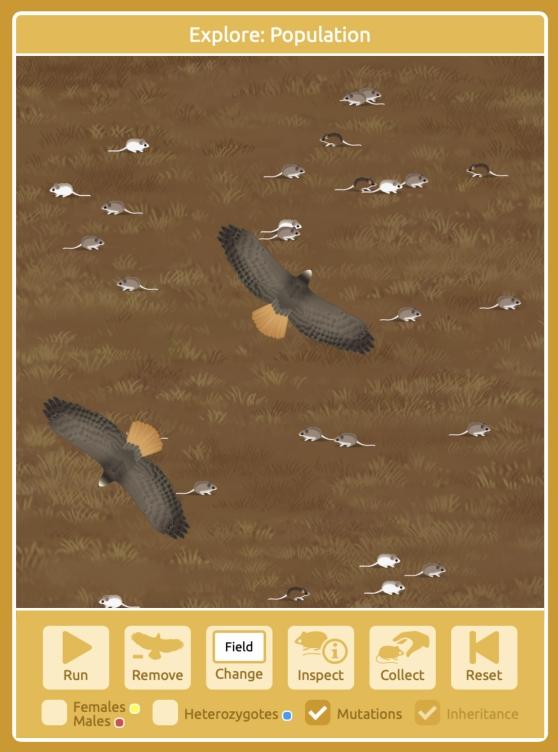
Students can see how the number of hawks affects deer mice in a simulation from the Concord Consortium.
As a high school teacher, I introduced real-world situations in my classroom as much as possible to expose my students to more authentic experiences. Whether it was redesigning the classroom to mirror a newsroom or inviting professionals as guest speakers, it took a lot of time, planning and effort.
Online simulations, however, make it easier for students to explore settings that would be difficult to reproduce in real life.
Unlike most materials on the internet, simulations are interactive and allow students to be in control of their learning through decision-making, problem-solving and experimenting and enable them to see the real-world consequences of their actions. These sites have become popular in STEM settings since they align well with lab courses, but simulations can be used across the curriculum and with students at every grade level.
Simulations make excellent introductions to a unit or a classroom project. They also can serve as an assessment, either a formative assessment at the beginning of a unit to check students’ prior knowledge or a summative assessment at the end to apply and demonstrate what they’ve learned.
Before using a simulation in your class, be sure to preview it to ensure it’s appropriate for your students. Model it with your students to clearly demonstrate its use and features. Some simulations are designed to be grasped intuitively, while others may require direct instructions, especially to meet the needs of multilingual learners or students with disabilities.
Simulations are engaging and free-wheeling by nature, but don’t let students go rogue. Set expectations and assign specific tasks to minimize distraction.
Here are some simulations to consider, depending on your needs:
Oregon Trail: Did you grow up playing Oregon Trail? Now online, Oregon Trail simulates a journey from Missouri to Oregon taken by American settlers in the mid-19th century. Strategy is necessary as participants make crucial decisions along the way regarding supplies, navigation, food sources and even sickness that affect the ultimate outcome.
Concord Consortium: Aligned with New York State’s Next Generation Science Standards, this site hosts scientifically accurate models and virtual labs in STEM subjects such as earth and space, math, chemistry and life science for students at all grade levels. Register for free, create a class, preview simulations and then assign them to your students.
Sesame Street Story Book Builder: Early elementary school students can choose among familiar characters, places, activities and feelings to create their own virtual stories. Children learn basic story elements while also incorporating social-emotional learning as well as word and letter recognition in a fun and engaging way.
Gerrymandering Redistricting Game: Gerrymandering, the practice of redrawing voting districts to favor one party or group, is a timely topic due to recent lawsuits challenging state redistricting plans. Designed by The New York Times so users can manipulate district boundaries in an imaginary state called Hexapolis, the Gerrymandering Redistricting Game simultaneously addresses politics and social justice while reinforcing math concepts.